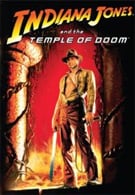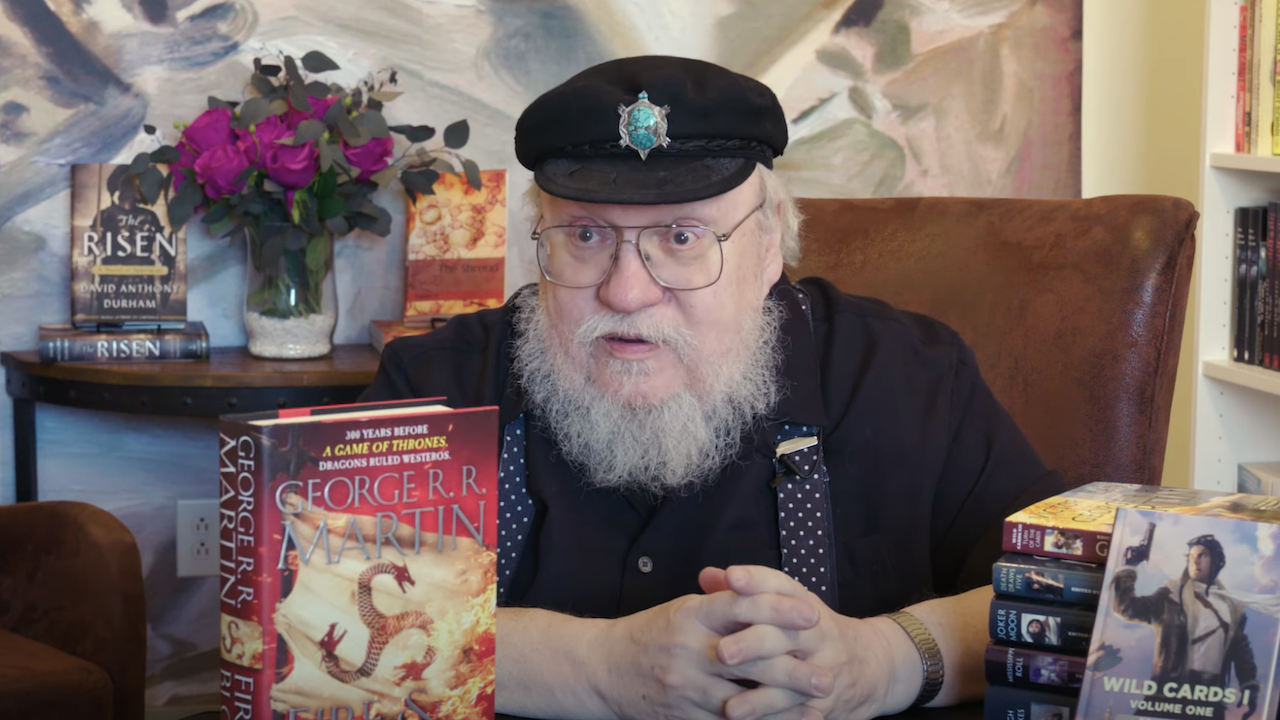When Willie Scott (Kate Capshaw) emerges from the tacky colored smoke on the stage of Club Obi-Wan in the bizarre Busby Berkeley opening of Indiana Jones and the Temple of Doom, she begins singing “Anything Goes” by Cole Porter. Although she’s singing it in Chinese, the song is anything but random in choice for Lucas and Spielberg. The song is clearly meant to be an overture for the evening’s entertainment and an apology for the cynical hatchet job to follow. In the minds of Lucas and Spielberg, it would seem that by 1984, the adventures of Indiana Jones also seemed too quaint, too 1936. Kids raised on Freddy Krueger, Jason Voorhees and Michael Meyers were accustomed to seeing the kind of sex, horror and violence onscreen that didn’t cut away at the moment of truth. The adventures of a two-fisted academic without any superpowers who miraculously survived death every time needed to be toughened up. It was time to redesign the fedora. This time the villains wouldn‘t just be those filthy Nazis, they‘d be religious cultists performing human sacrifices in the bowels of the earth. Dr. Jones would be given a small Chinese boy as his slave, a ditzy female stereotype to romance, and a non-stop adventure that defies all notions of pacing and storytelling skill. All of the real qualities that made Raiders of the Lost Ark an adventure film classic would be ignored or reconsidered. “Anything Goes“, indeed.
Dropping all of the great characters from Raiders, the filmmakers hedge their bets by making this one a “prequel”. As things have passed, we see that this was a wise choice so that characters like Sallah (John Rhys-Davies), Brody (Denholm Elliot), and Marion (Karen Allen) could be brought back later. The wartime adventure setting is dropped and the main influence is not old serials so much as George Stevens’ film Gunga Din and pulp magazine characters like Doc Savage.
This time it’s 1935 and Indiana Jones is looking for “fortune and glory,” more like Fred C. Dobbs from Treasure of the Sierra Madre than his character from the first film. In fact, his tomb raiding attitude in the opening scenes resembles Belloq (Paul Freeman) of all people. The film’s overcooked plot has him going from a tuxedoed ladies man like James Bond to a possessed drone loyal to the film’s religious zealot villain, Thuggee cult leader Mola Ram (Amrish Puri). The setting is an India out of British Colonial boys adventures and the situation has Jones having to forego his dreams of “fortune and glory” to save village children from enslavement to the cult by returning the precious and powerful Shankara stones to their rightful place in Pankot Palace.
In changing the film’s tone and imagery to something darker, the film does not become more realistic or “grown-up” but rather regresses into a more pulpy children’s adventure complete with a “Johnny Quest” identification figure in the character of Short Round (Ke Huy Quan). Every element is exaggerated, with the humor broadened into 1941 style mechanized slapstick, and the character of Indiana Jones marginalized. Where the brilliant Raiders was an adventure film aimed at the child at heart, Temple of Doom is really designed for the kiddie market itself in the same reductionary way Lucas designed Return of the Jedi and every film since. Whatever you may think of Jedi, it is undeniable that Lucas had one thing in mind with the creation of the toy-store friendly Ewoks. These teddy bear creations might as well have appeared onscreen adorned with price tags.
Of course Lucas and Spielberg just shrugged it all off at the time and took refuge in the excuse that they were just making an entertainment, nothing more. Therefore, the argument is that they cannot also be held responsible for carrying forth the inherent racism and stereotyping of 1930’s pop culture into a 1984 motion picture. The juvenile gross-out humor of the dinner party scene in Pankot Palace reveals their Anglo-centric attitudes with a Fear Factor-styled menu of eyeball soup, live snakes, and chilled monkey brains. Indian cuisine may be different from our own meat and potatoes but this schoolyard caricature is absurd and just plain stupid.
Ignorance can be excused, but bad filmmaking from these two cinematic masters can not. Among some great action set pieces there’s some really lame filmmaking going on here. One of the great pleasures of Lawrence Kasdan’s screenplay for Raiders of the Lost Ark was its effortless mastery of pacing, a mastery realized onscreen through Spielberg‘s almost balletic, graceful direction. The story was told with a fast pace but without becoming overwhelming. Kasdan spent time to build up to the action set pieces and alternated them very effectively with quieter, more contemplative scenes in order to create a pleasurable rhythm of rising and falling tension. Temple of Doom, on the other hand, is a film with a nice beat but you just can’t dance to it. Screenwriters Willard Huyck and Gloria Katz toss in scenes randomly and soon the whole thing feels like a Warner Bros. cartoon gone mad, with one Rube Goldberg device after another whizzing by until the brake gear comes off. A frenetic pace does not always equal enjoyment.
This does not mean that Temple of Doom is without merit. It‘s not like we‘re talking about Allan Quartermain and the Lost City of Gold here. It’s a failure but only when compared to a masterpiece like Raiders of the Lost Ark. Both the mine car chase and the rope bridge climax are fantastic action scenes, perfectly executed by Spielberg. The problem remains that even though Raiders was a hard act to follow, it should‘ve been followed with more respect. Temple of Doom was the wrong approach for the character and Lucas and Spielberg clearly thought so as well since Last Crusade attempts to return the series to the Nazis and Christian artifact world. So, while it does have its flaws, Temple of Doom is still better than almost any other adventure film around and with Harrison Ford in his greatest role as Indiana Jones, I’d rather watch this than almost anything. Except Raiders of the Lost Ark, of course.
Note: For fun, try and find Dan Aykroyd’s cameo in the movie. This new Adventure Collection DVD set is completely redundant and really nothing more than consumer exploitation. The 2003 release already featured remastered versions of all three films and included a bevy of fantastic extras not found on any of these discs, including Laurent Bouzereau‘s excellent behind the scenes documentaries on each film. If they were going to try and create a more definitive version including all of the old extras and some new ones, this would’ve been a worthwhile edition. Standing alone, the new material isn’t really worth the time.
There are some new interviews looking back at Temple of Doom obviously shot during the filming of Kingdom of the Crystal Skull ,a short piece of the insect wrangling, some “pop-up trivia”, a look at the locations in Sri Lanka, the storyboards, and some boring galleries. There’s also a game trailer for the Lego Indiana Jones: The Original Adventures, you know back when Indiana Jones was made of Lego.
If you already own the 2003 release, don‘t bother with this one. If you don‘t, buy the 2003 one instead. There‘s nothing worth owning on this disc.
One Of Harry Potter’s Newest TV Cast Members Has Already Had A Magical Time On One Of The Movie Sets
One Big Bang Theory Vet's Retirement News Is Disappointing To Hear, But I'm Still Hopeful The Character Can Live On
'Winds Of Winter Is 13 Years Late.' George R.R. Martin Gets Honest About Not Finishing Game Of Thrones Books, But He Has Some Beef With The Critics











